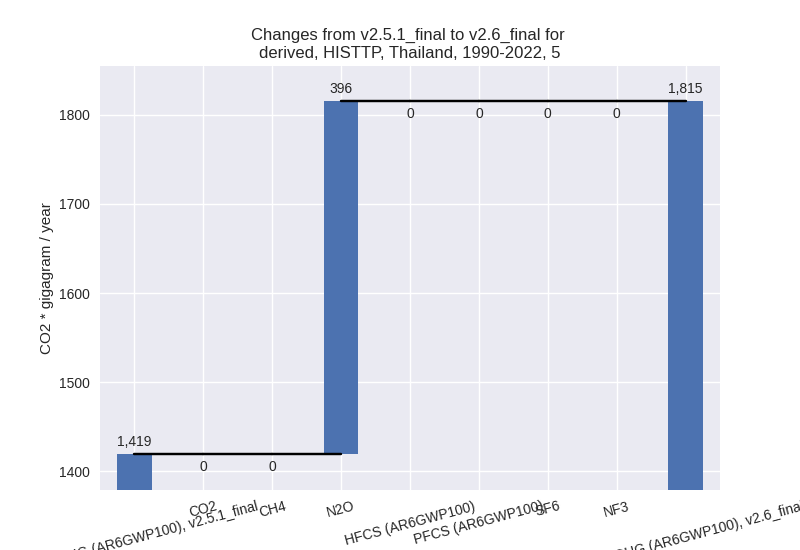Changes in PRIMAP-hist v2.6_final compared to v2.5.1_final for Thailand
2024-09-24
Johannes Gütschow
Change analysis for Thailand for PRIMAP-hist v2.6_final compared to v2.5.1_final
Overview over emissions by sector and gas
The following figures show the aggregate national total emissions excluding LULUCF AR6GWP100 for the country reported priority scenario. The dotted linesshow the v2.5.1_final data.
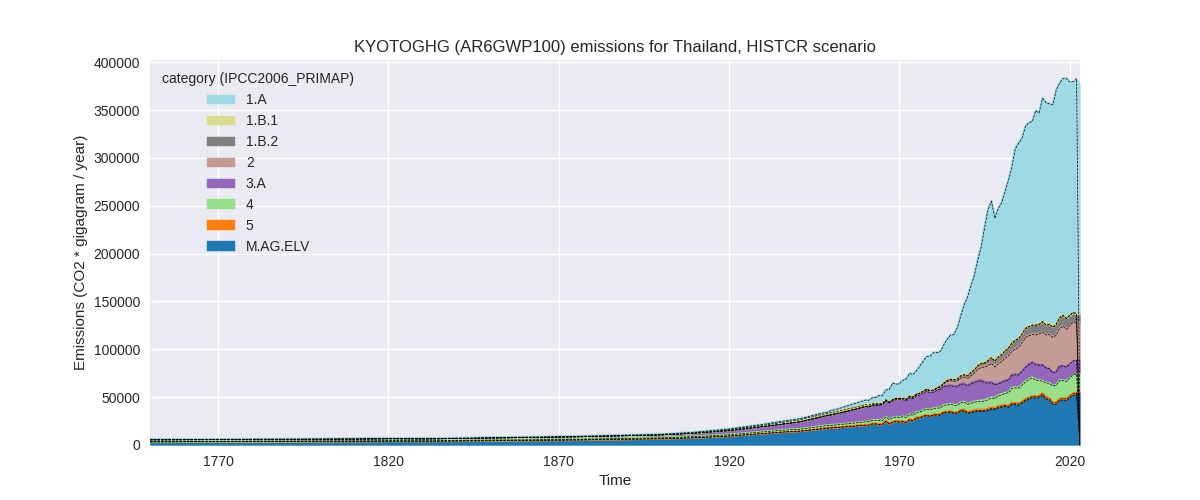
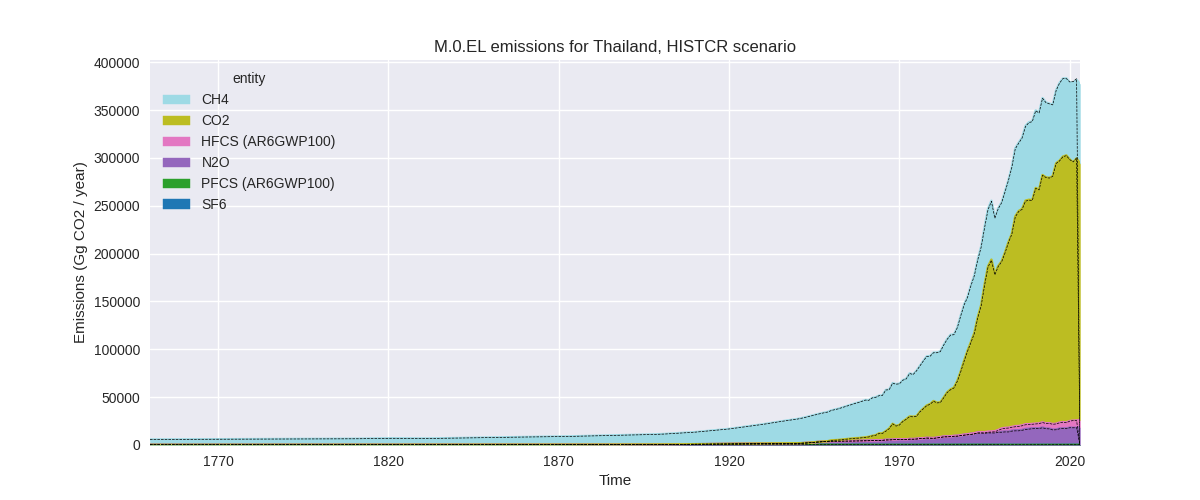
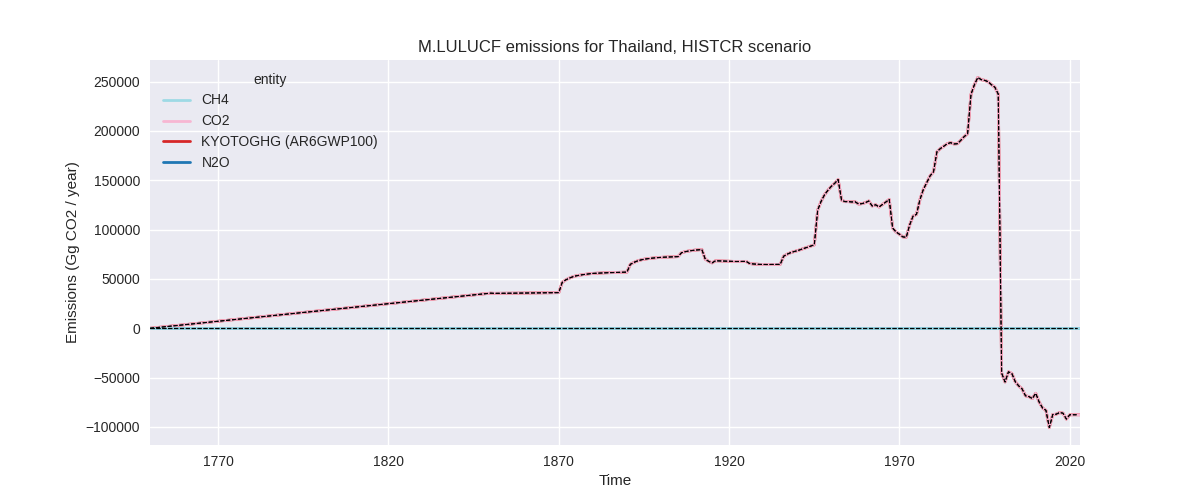
The following figures show the aggregate national total emissions excluding LULUCF AR6GWP100 for the third party priority scenario. The dotted linesshow the v2.5.1_final data.
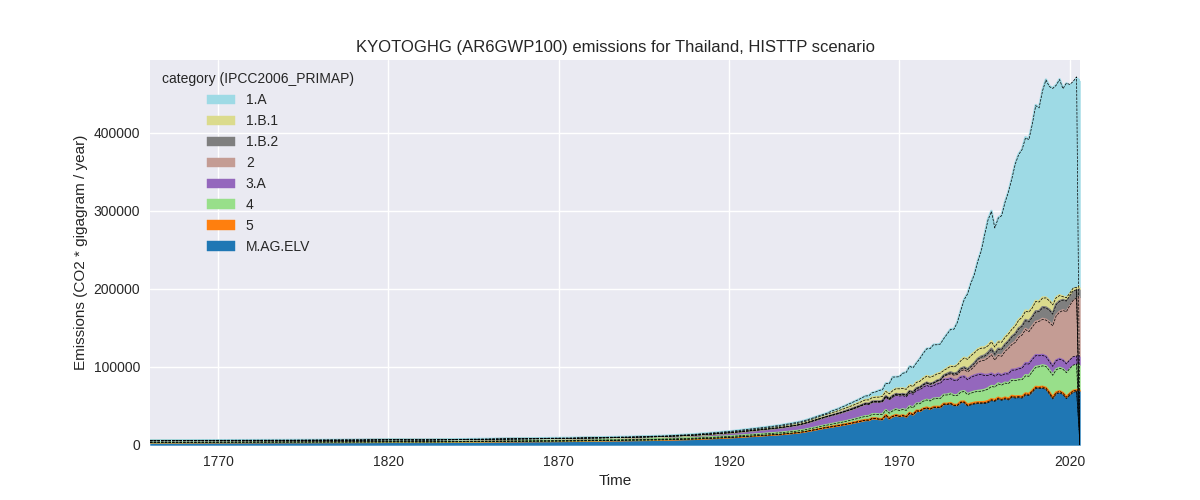
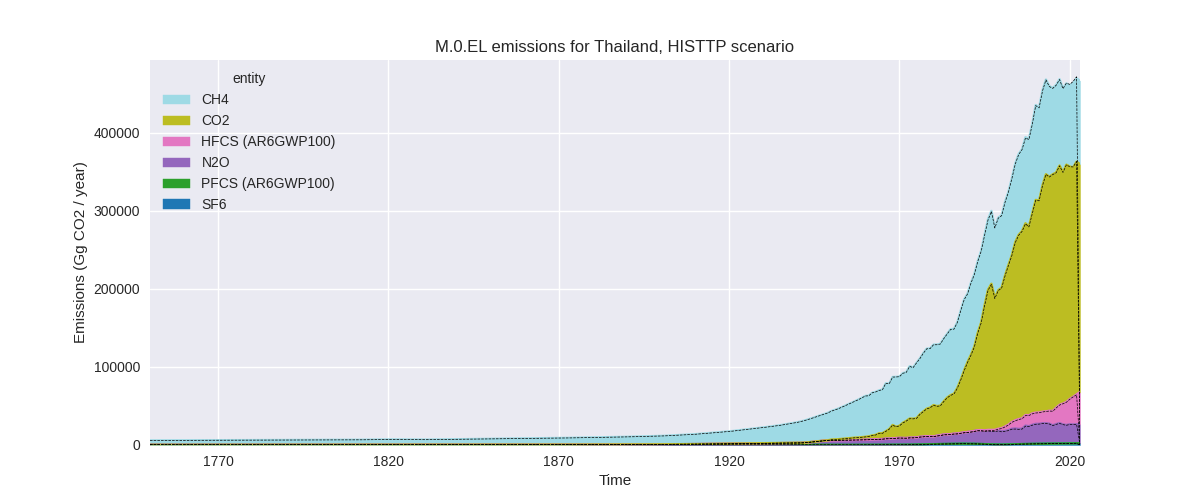
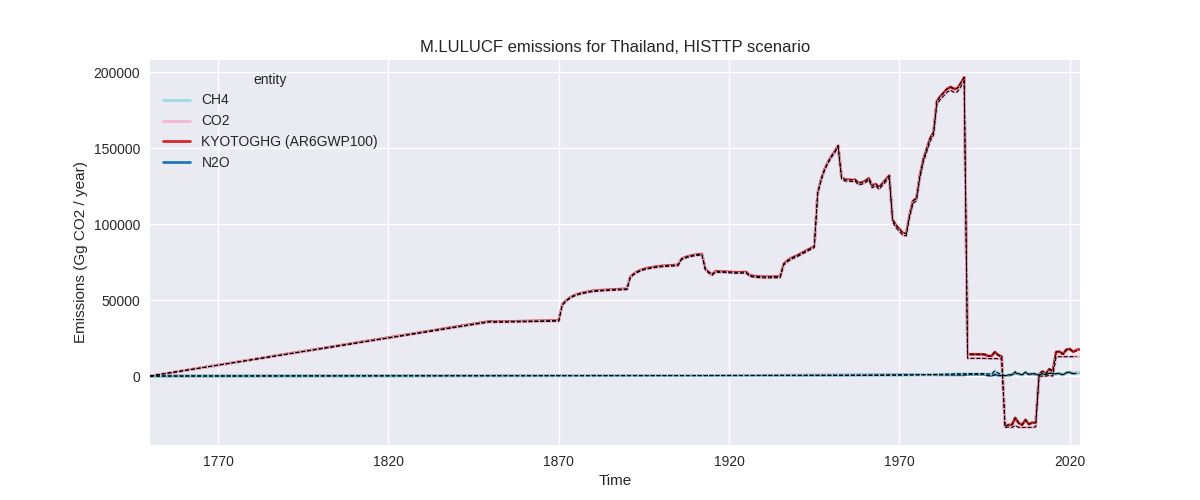
Overview over changes
In the country reported priority scenario we have the following changes for aggregate Kyoto GHG and national total emissions excluding LULUCF (M.0.EL):
- Emissions in 2022 have changed by -0.3%% (-1219.47 Gg CO2 / year)
- Emissions in 1990-2022 have changed by 0.1%% (316.50 Gg CO2 / year)
In the third party priority scenario we have the following changes for aggregate Kyoto GHG and national total emissions excluding LULUCF (M.0.EL):
- Emissions in 2022 have changed by -0.4%% (-1887.56 Gg CO2 / year)
- Emissions in 1990-2022 have changed by 0.1%% (390.77 Gg CO2 / year)
Most important changes per scenario and time frame
In the country reported priority scenario the following sector-gas combinations have the highest absolute impact on national total KyotoGHG (AR6GWP100) emissions in 2022 (top 5):
- 1: 4, CH4 with -619.08 Gg CO2 / year (-3.3%)
- 2: 1.A, CO2 with -582.00 Gg CO2 / year (-0.2%)
- 3: 2, HFCS (AR6GWP100) with 170.37 Gg CO2 / year (2.3%)
- 4: 2, CO2 with -130.44 Gg CO2 / year (-0.4%)
- 5: 5, N2O with -75.71 Gg CO2 / year (-4.2%)
In the country reported priority scenario the following sector-gas combinations have the highest absolute impact on national total KyotoGHG (AR6GWP100) emissions in 1990-2022 (top 5):
- 1: 5, N2O with 395.65 Gg CO2 / year (27.9%)
- 2: 4, CH4 with -52.92 Gg CO2 / year (-0.4%)
- 3: 1.A, CO2 with -31.91 Gg CO2 / year (-0.0%)
- 4: 2, HFCS (AR6GWP100) with 5.16 Gg CO2 / year (0.1%)
- 5: 2, CO2 with -3.95 Gg CO2 / year (-0.0%)
In the third party priority scenario the following sector-gas combinations have the highest absolute impact on national total KyotoGHG (AR6GWP100) emissions in 2022 (top 5):
- 1: 4, CH4 with -1680.77 Gg CO2 / year (-5.2%)
- 2: 1.A, CO2 with -633.29 Gg CO2 / year (-0.2%)
- 3: 2, HFCS (AR6GWP100) with 553.19 Gg CO2 / year (1.5%)
- 4: 2, CO2 with -150.00 Gg CO2 / year (-0.4%)
- 5: 5, N2O with -75.71 Gg CO2 / year (-4.2%)
In the third party priority scenario the following sector-gas combinations have the highest absolute impact on national total KyotoGHG (AR6GWP100) emissions in 1990-2022 (top 5):
- 1: 5, N2O with 395.65 Gg CO2 / year (27.9%)
- 2: 4, CH4 with -76.98 Gg CO2 / year (-0.3%)
- 3: 4, N2O with 42.54 Gg CO2 / year (6.5%)
- 4: 1.A, CO2 with -34.73 Gg CO2 / year (-0.0%)
- 5: 2, HFCS (AR6GWP100) with 16.76 Gg CO2 / year (0.1%)
Notes on data changes
Here we list notes explaining important emissions changes for the country. ’' means that the following text only applies to the TP time series, while means that it only applies to the CR scenario. Otherwise the note applies to both scenarios.
- We have no new country reported data for Thailand.
- Changes are due to updated third party data for energy and cement CO2.
Changes by sector and gas
For each scenario and time frame the changes are displayed for all individual sectors and all individual gases. In the sector plot we use aggregate Kyoto GHGs in AR6GWP100. In the gas plot we usenational total emissions without LULUCF. ## country reported scenario
2022
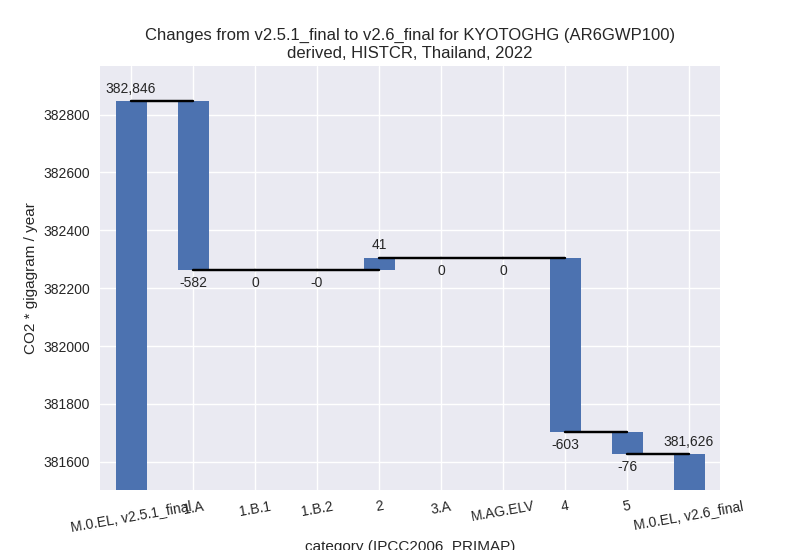
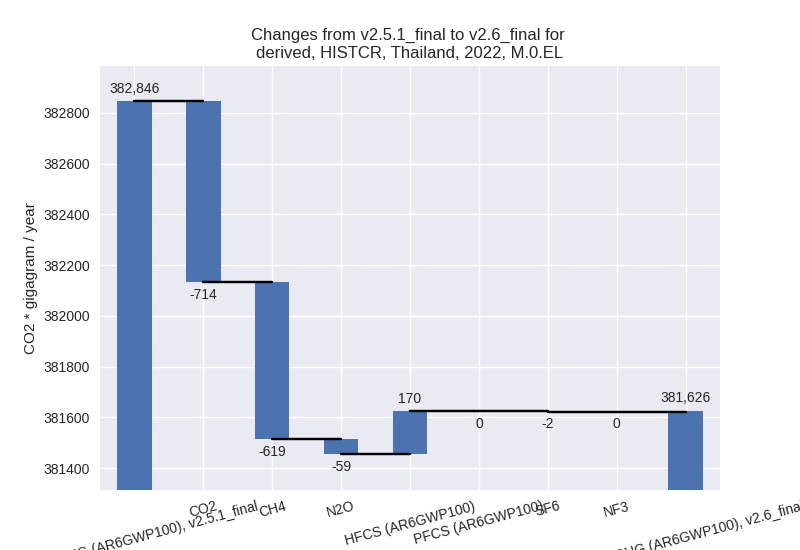
1990-2022
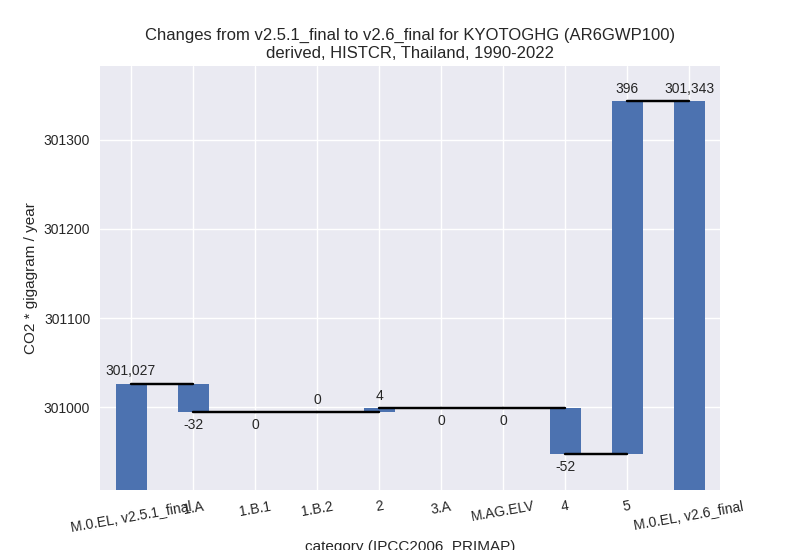
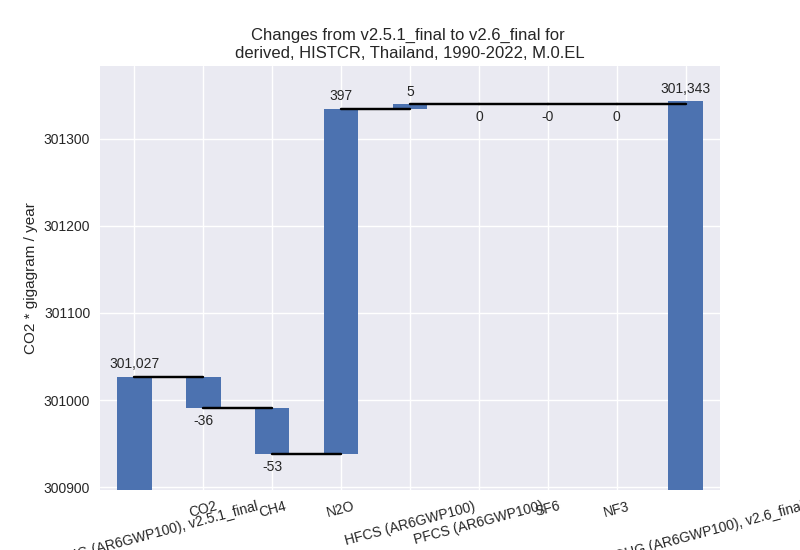
third party scenario
2022
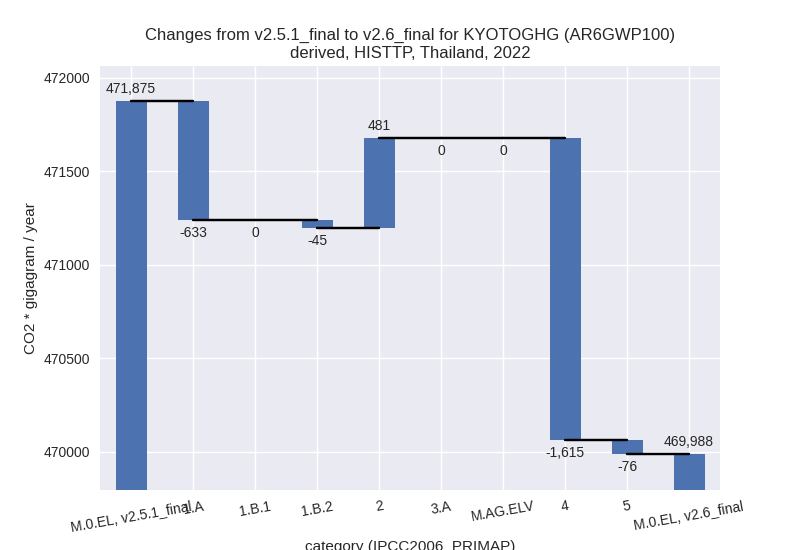
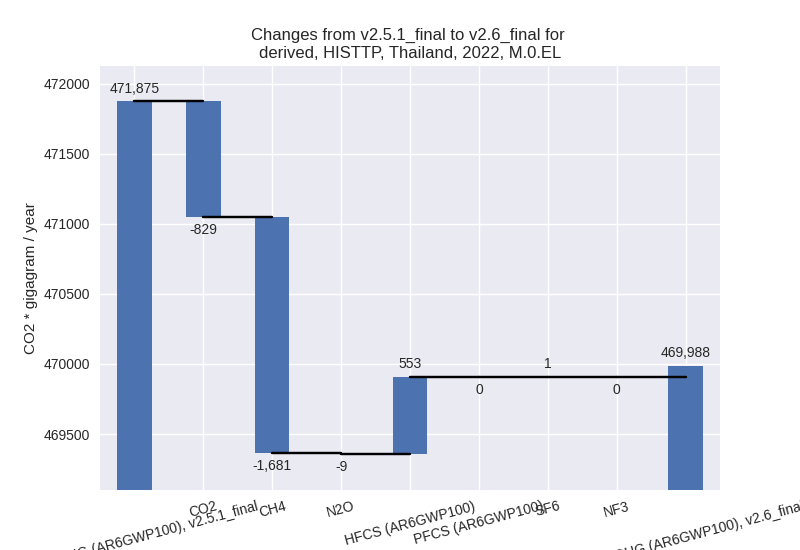
1990-2022
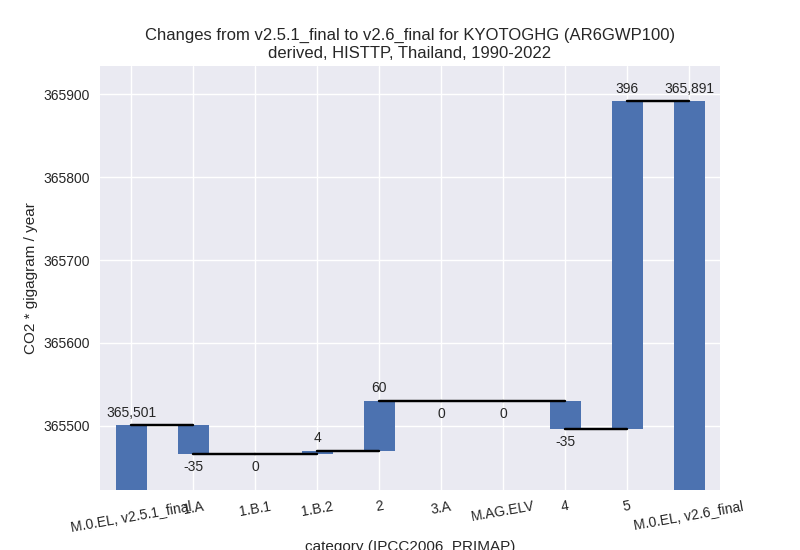
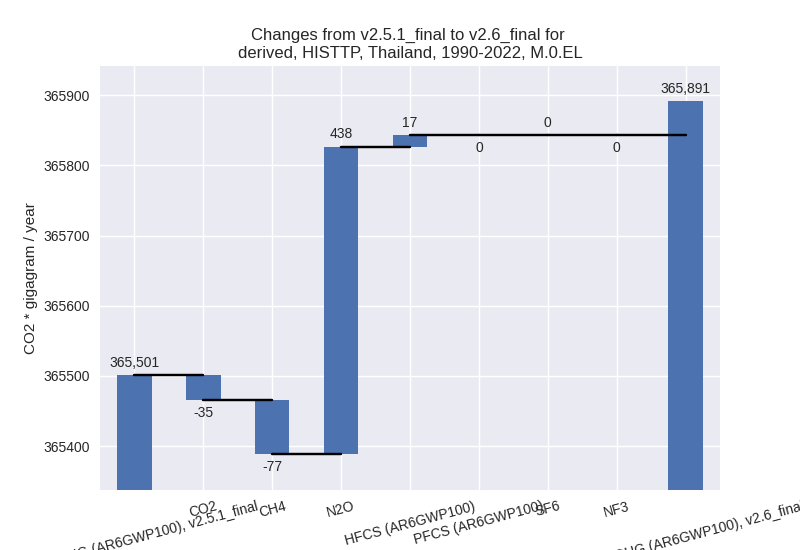
Detailed changes for the scenarios:
country reported scenario (HISTCR):
Most important changes per time frame
For 2022 the following sector-gas combinations have the highest absolute impact on national total KyotoGHG (AR6GWP100) emissions in 2022 (top 5):
- 1: 4, CH4 with -619.08 Gg CO2 / year (-3.3%)
- 2: 1.A, CO2 with -582.00 Gg CO2 / year (-0.2%)
- 3: 2, HFCS (AR6GWP100) with 170.37 Gg CO2 / year (2.3%)
- 4: 2, CO2 with -130.44 Gg CO2 / year (-0.4%)
- 5: 5, N2O with -75.71 Gg CO2 / year (-4.2%)
For 1990-2022 the following sector-gas combinations have the highest absolute impact on national total KyotoGHG (AR6GWP100) emissions in 1990-2022 (top 5):
- 1: 5, N2O with 395.65 Gg CO2 / year (27.9%)
- 2: 4, CH4 with -52.92 Gg CO2 / year (-0.4%)
- 3: 1.A, CO2 with -31.91 Gg CO2 / year (-0.0%)
- 4: 2, HFCS (AR6GWP100) with 5.16 Gg CO2 / year (0.1%)
- 5: 2, CO2 with -3.95 Gg CO2 / year (-0.0%)
Changes in the main sectors for aggregate KyotoGHG (AR6GWP100) are
- 1: Total sectoral emissions in 2022 are 253694.35 Gg CO2 / year which is 66.5% of M.0.EL emissions. 2022 Emissions have changed by -0.2% (-582.20 Gg CO2 / year). 1990-2022 Emissions have changed by -0.0% (-31.91 Gg CO2 / year).
- 2: Total sectoral emissions in 2022 are 40132.70 Gg CO2 / year which is 10.5% of M.0.EL emissions. 2022 Emissions have changed by 0.1% (41.49 Gg CO2 / year). 1990-2022 Emissions have changed by 0.0% (4.42 Gg CO2 / year).
- M.AG: Total sectoral emissions in 2022 are 66990.77 Gg CO2 / year which is 17.6% of M.0.EL emissions. 2022 Emissions have changed by 0.0% (0.00 Gg CO2 / year). 1990-2022 Emissions have changed by 0.0% (0.00 Gg CO2 / year).
- 4: Total sectoral emissions in 2022 are 19089.50 Gg
CO2 / year which is 5.0% of M.0.EL emissions. 2022 Emissions have
changed by -3.1% (-603.04 Gg CO2 /
year). 1990-2022 Emissions have changed by -0.3% (-51.65 Gg CO2 / year). For 2022 the
changes per gas
are:
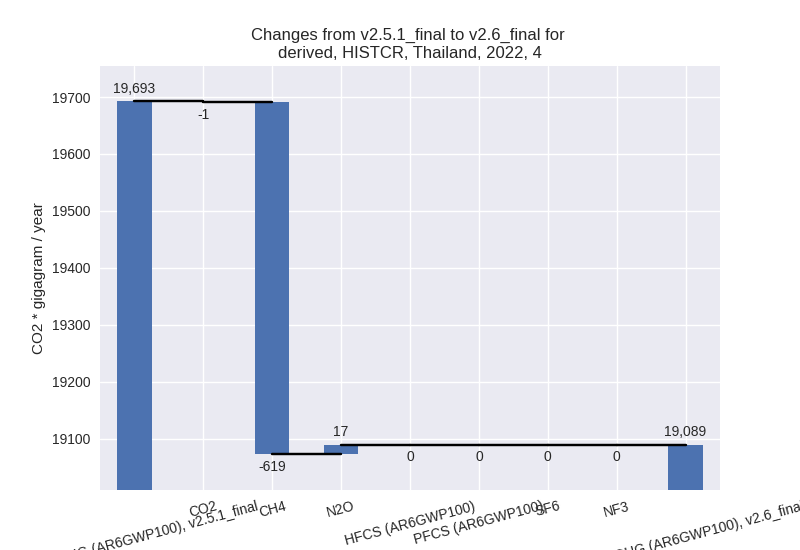
- 5: Total sectoral emissions in 2022 are 1719.06 Gg
CO2 / year which is 0.5% of M.0.EL emissions. 2022 Emissions have
changed by -4.2% (-75.71 Gg CO2 /
year). 1990-2022 Emissions have changed by 27.9% (395.65 Gg CO2 / year). For 2022 the
changes per gas
are:
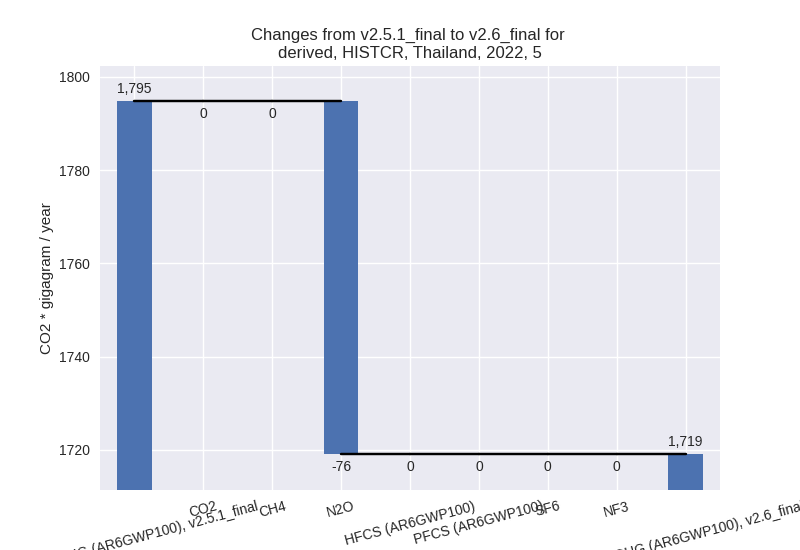
For 1990-2022 the changes per gas are: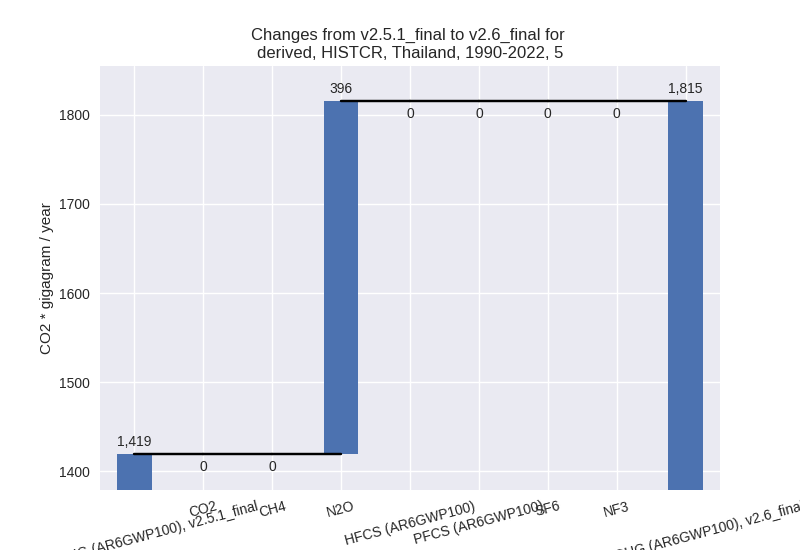
third party scenario (HISTTP):
Most important changes per time frame
For 2022 the following sector-gas combinations have the highest absolute impact on national total KyotoGHG (AR6GWP100) emissions in 2022 (top 5):
- 1: 4, CH4 with -1680.77 Gg CO2 / year (-5.2%)
- 2: 1.A, CO2 with -633.29 Gg CO2 / year (-0.2%)
- 3: 2, HFCS (AR6GWP100) with 553.19 Gg CO2 / year (1.5%)
- 4: 2, CO2 with -150.00 Gg CO2 / year (-0.4%)
- 5: 5, N2O with -75.71 Gg CO2 / year (-4.2%)
For 1990-2022 the following sector-gas combinations have the highest absolute impact on national total KyotoGHG (AR6GWP100) emissions in 1990-2022 (top 5):
- 1: 5, N2O with 395.65 Gg CO2 / year (27.9%)
- 2: 4, CH4 with -76.98 Gg CO2 / year (-0.3%)
- 3: 4, N2O with 42.54 Gg CO2 / year (6.5%)
- 4: 1.A, CO2 with -34.73 Gg CO2 / year (-0.0%)
- 5: 2, HFCS (AR6GWP100) with 16.76 Gg CO2 / year (0.1%)
Changes in the main sectors for aggregate KyotoGHG (AR6GWP100) are
- 1: Total sectoral emissions in 2022 are 282557.59 Gg CO2 / year which is 60.1% of M.0.EL emissions. 2022 Emissions have changed by -0.2% (-678.11 Gg CO2 / year). 1990-2022 Emissions have changed by -0.0% (-30.56 Gg CO2 / year).
- 2: Total sectoral emissions in 2022 are 74817.25 Gg CO2 / year which is 15.9% of M.0.EL emissions. 2022 Emissions have changed by 0.6% (481.38 Gg CO2 / year). 1990-2022 Emissions have changed by 0.2% (60.20 Gg CO2 / year).
- M.AG: Total sectoral emissions in 2022 are 79304.28 Gg CO2 / year which is 16.9% of M.0.EL emissions. 2022 Emissions have changed by 0.0% (0.00 Gg CO2 / year). 1990-2022 Emissions have changed by 0.0% (0.00 Gg CO2 / year).
- 4: Total sectoral emissions in 2022 are 31589.33 Gg
CO2 / year which is 6.7% of M.0.EL emissions. 2022 Emissions have
changed by -4.9% (-1615.11 Gg CO2 /
year). 1990-2022 Emissions have changed by -0.2% (-34.52 Gg CO2 / year). For 2022 the
changes per gas
are:

- 5: Total sectoral emissions in 2022 are 1719.06 Gg
CO2 / year which is 0.4% of M.0.EL emissions. 2022 Emissions have
changed by -4.2% (-75.71 Gg CO2 /
year). 1990-2022 Emissions have changed by 27.9% (395.65 Gg CO2 / year). For 2022 the
changes per gas
are:
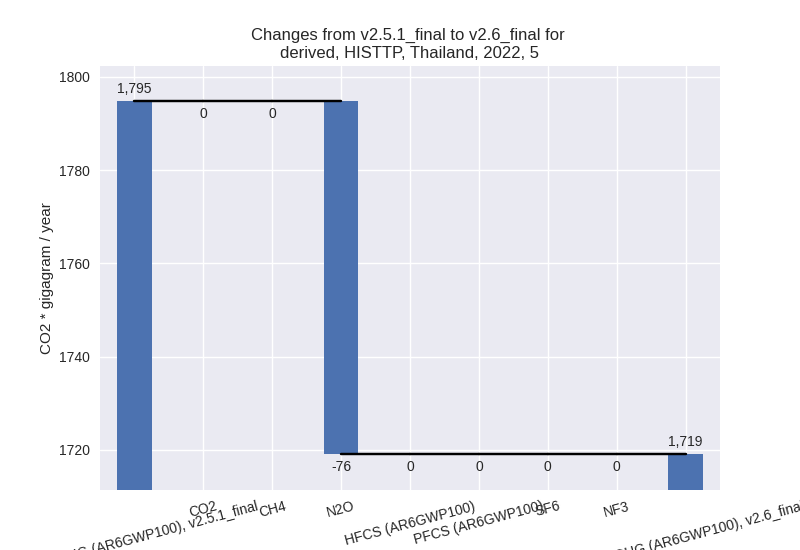
For 1990-2022 the changes per gas are: